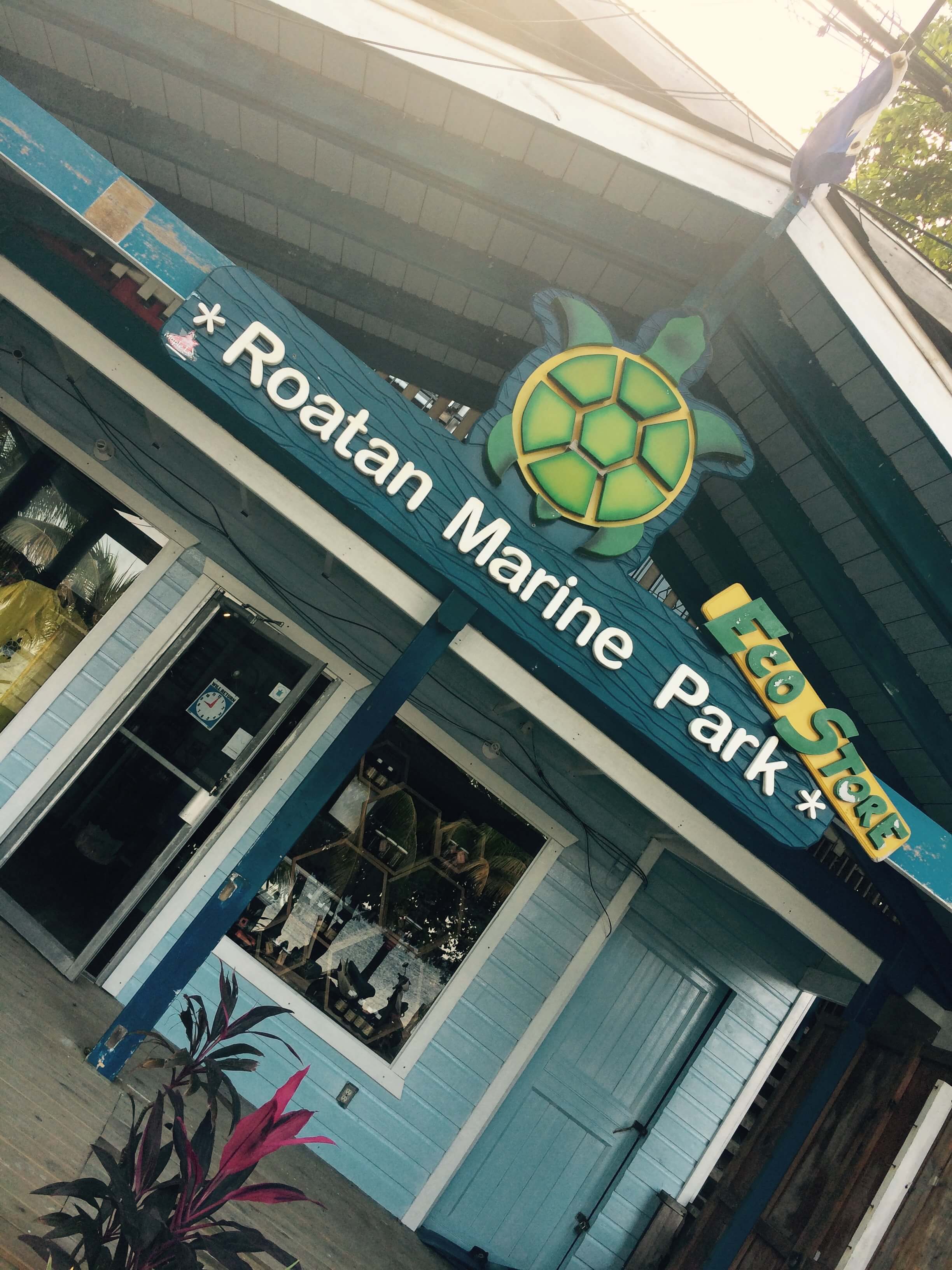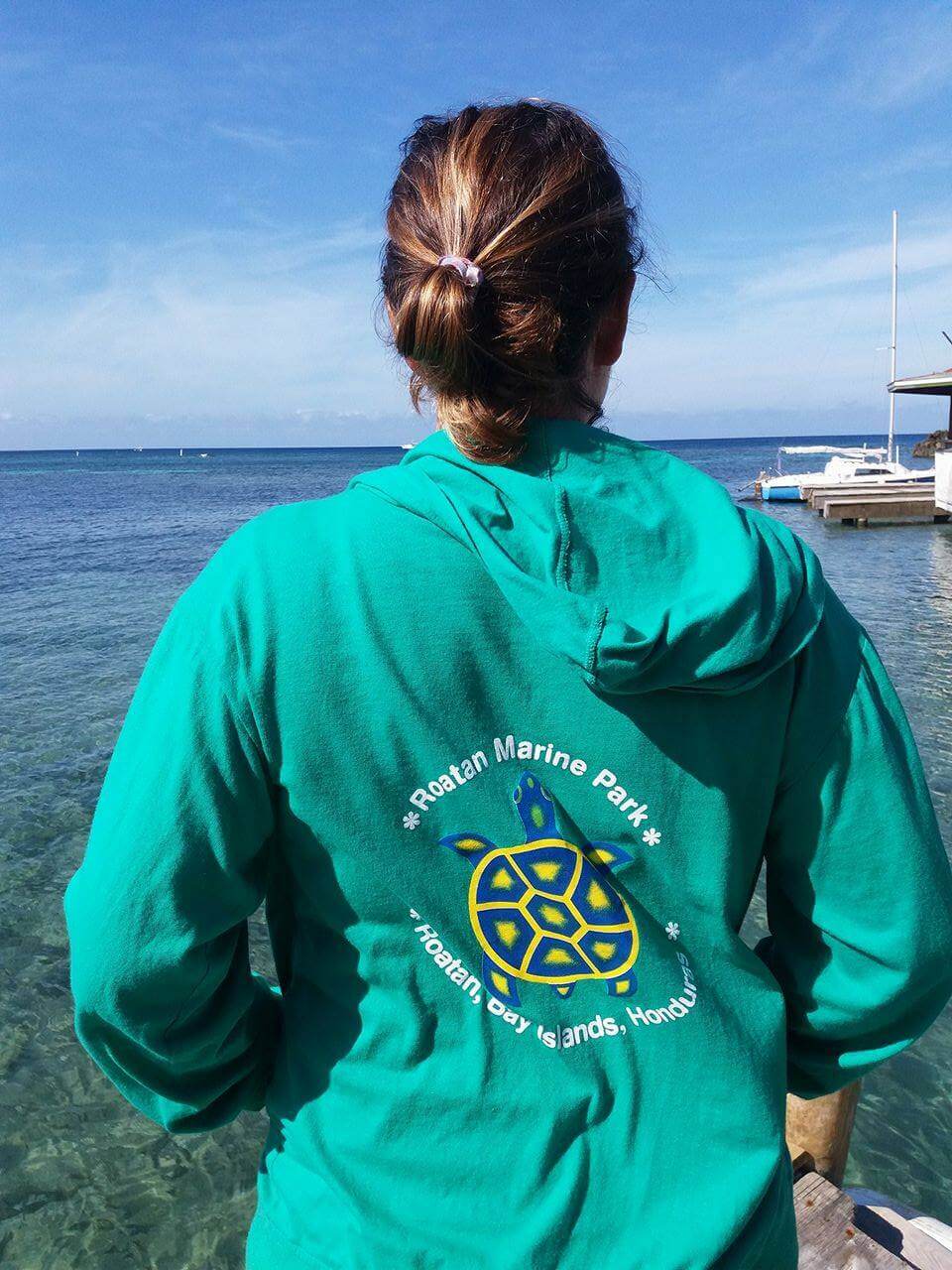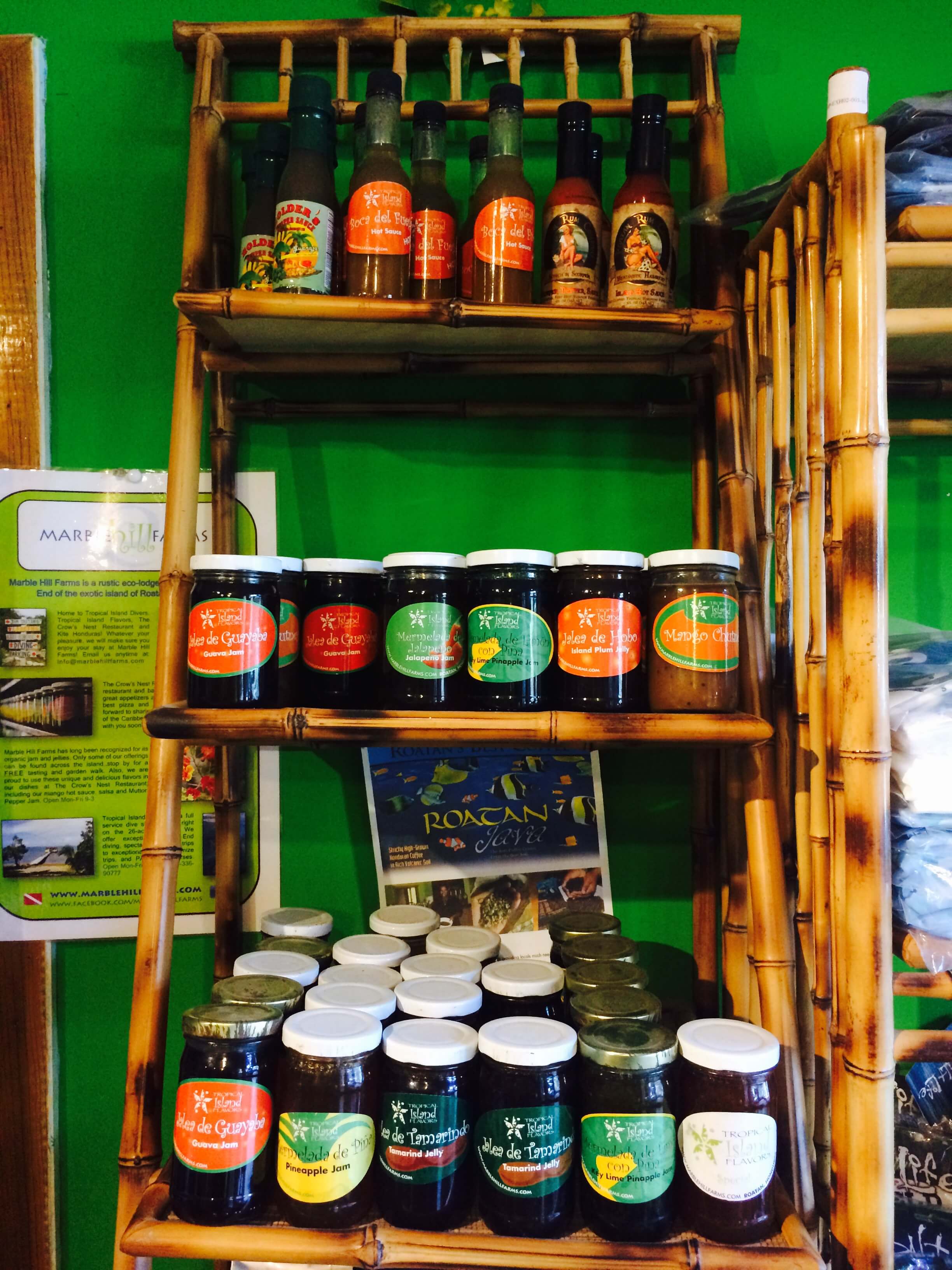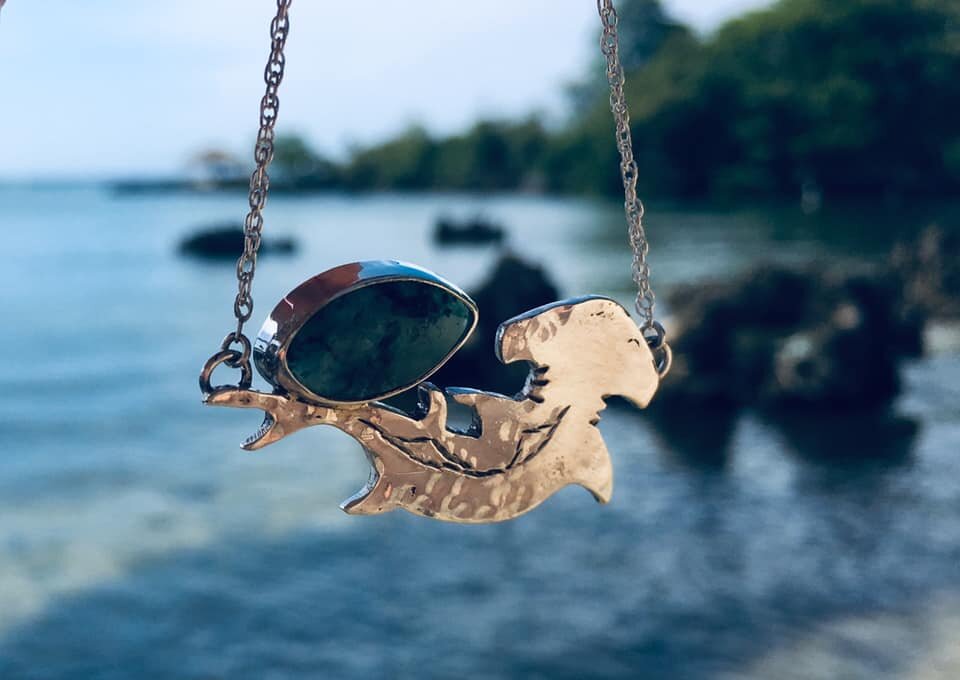6 Species Nature Lovers Should Look Out For On Roatan
While Roatan is known for her coral reefs, there is still plenty of wildlife to enjoy above the water. Check out these 6 species nature lovers should look out for when they travel to Roatan!
The tiny island of Roatan, which happens to be the largest of the Bay Islands, is overflowing in natural wealth and rich history. While many will agree that the majority of Roatan’s wealth lies in her coral reefs, there is still plenty for nature lovers to admire above the water. Read on for the top 6 species nature lovers should look out for on Roatan!
Roatan Island Agouti (Dasyprotcta ruatanica)
What was that quick brown blur scurrying across the pathway? Was that a guinea pig with hooves? Nope! It was the endemic Roatan Island Agouti - also known as a “watusa” by the locals. The Roatan Agouti, which is slightly smaller than the Central American Agouti, is known for its rich orange-brown fur, and tends to bear a white spot on the chin and a yellowish patch on the belly. Active both day and night, this timid and adorable island rabbit can be found in the bush where it enjoys snacking on almonds, coconuts, and hibiscus.
Yellow-Naped Parrot (Amazona auropalliata)
It’s early in the morning, the sun is coming out to play, and the trees are alive with the sound of the birds. If you listen closely, you may just hear the squawks of the endemic Yellow-Naped Parrot. These beautiful birds are known for the yellow band that resides across the nape of their neck, and their vibrantly green crown. Unfortunately, deforestation and the illegal pet trade has contributed to this species being declared critically endangered by the IUCN Red List. One of the best places to still get a glimpse of the Yellow-Naped Parrot is the Blue Harbor Tropical Arboretum.
Roatan Spiny-Tailed Iguana (Ctenosaura oedirhina)
If you’re coming to Roatan, spotting the endemic Spiny-Tailed Iguana should be a must on your list! This black-and-white striped iguana is distinguished by its rounded snout, and was finally recognized as its own species in 1987. Known as “garrobo” by the locals, these iguanas can be found in mangroves, the iron shore, and even in urban areas such as the Grand Roatan in West Bay. However, the Roatan Spiny-Tailed Iguana is considered endangered due to food exploitation, predation by cats and dogs, and habitat loss. At this time, approximately 4,500 iguanas live on the island.
Green-Breasted Mango Hummingbird (Anthracothorax prevostii)
They say great things come in small packages - like the Green-Breasted Mango! These delightful hummingbirds love to pollinate the local flora and sip sweet nectar; literally living the dream. The males are known for their deep green feathers, blue throat, and purple and orange (hello, mango) tail feathers. While they are easily spotted around the island, you can visit La Sirena on the East End for a special treat on the water - the intentional placement of several bird feeders mean these hummingbirds abound while you enjoy a fabulous meal.
Golden-Fronted Woodpecker (Melanerpes aurifrons)
Ah, the Roatan island alarm clock. No, we don’t mean the chickens - we mean the Golden-Fronted Woodpecker! If you’ve ever spent a night in Roatan, you’ve likely heard the early morning plucking of this gorgeous bird outside your window. With a rich yellow nape and lower belly, female Golden-fronted Woodpeckers look as if they have been sprinkled with gold. Always ones to outdo themselves, the males top off their plumage with a gold forehead and brilliant red/orange crown.
Roatan Coral Snake
(Micrurus ruatanus)
You know the rhyme “red on yellow, kill a fellow, red on black is a friend of Jack?” Well…not so much. The endemic and, unfortunately critically endangered, Roatan Coral Snake is known for its timid nature and alternating black and red bands. Although no yellow is present on the body, the snake's venom has been studied to show a toxin-rich substance that is lethal to mice. In fact, its high potency was determined to be one of the most lethal in Central America! The Roatan Coral Snake can generally be found towards the West side of the Island, where it enjoys shelter under coconut leaves or within wetlands.
This list comprises only a small fraction of the incredible wildlife you can witness on the island. Your best bet for seeing the full range of biodiversity that Roatan has to offer is to hire a local guide - just as you would for scuba diving! Joel Amaya with Roatan Wildlife is one such guide who is not only a bird-watcher's dream come true, but is also pioneering the environmental education, documentation, and conservation efforts of wildlife species on Roatan.
So what are you waiting for, nature lovers?
Get out there and see some neature!
How Much Does It Cost to Stay in West End, Roatan for a Week?
So you're coming to visit Roatan for a week or so, fantastic! When it comes to travel expenses like food, transport, lodging and activities, many travelers want to have an idea of how much to budget. One thing to note: costs here on Roatan might not be what you expect.
So you're coming to visit the West End area of Roatan for a week or so, fantastic! When it comes to travel expenses like food, transport, lodging and activities, many travelers want to have an idea of how much to budget. Spoiler Alert! Things here in West End might not be what you expect.
When you think of Roatan as being part of Honduras, many travelers expect things to be super affordable since we're in Central America. The reality is that Roatan is an island, and almost everything consumed here is imported. Our food, products and supplies had to undergo a much longer journey to make it to our happy island, and therefore that drives up the price of just about everything.
Let's do a quick breakdown on the most common travel expenses when visiting West End, Roatan. Keep in mind that when it comes to other islands and what things cost there, Roatan still ranks high in terms of affordability and getting the most bang for your buck.
Food & Drink Costs
The view from Ginger's Caribbean Grill, across the beach from Roatan Divers
Whether you are eating out at a restaurant or buying groceries, expect the price to be what you would typically pay in the United States. We have big supermarkets in Coxen Hole and French Harbor, which carry many of the common American name brands most tourists recognize. On average, these goods will cost the same, if not more than if you were buying them at your local grocery store.
For eating out at most restaurants in West End, expect to spend around $8-$13 per person (not including tip). Food can run about $15-20 a person at a few of the more upscale establishments. To read more about tipping policies and other FAQ here on the island, go here for a helpful guideline.
And sure, it's possible to find cheaper eats depending on what foods you enjoy (think fried food and lots of carbs)! Here in West End, we do have local street vendors, serving typical Honduran food, like Baleadas and platos tipicos (meat, beans and rice) for around $5.
We know, we know - the biggest question on your mind is how much a beer costs, right? Many of us like to gauge the affordability of a travel destination by their cost of beer. In Roatan, average cost for local beer is about $3, wine & imports (think U.S beers) $5, and cocktails between $5-7.
Lodging
West End sits at just about 1 mile long, and within that area is a range of accommodation options for travelers. Whether you prefer a more established hotel in the heart of West End or a home or condo for rent on the outskirts if you enjoy being off the beaten path a bit, there's always somewhere you can find that will fit your needs.
Hotels
Prices for hotels in West End can range from $35 to $200 a night (not including hostels), so every budget is covered. Important factors to consider when thinking about your hotel options are the time of year (high season prices vs low season prices) and if they include A/C or offer any meal options in their price. Hotels here are generally pretty small in size and they bring much of the charm and small community setting that people love about Roatan.
It's important to note that while West Bay has all-inclusives, hotels in West End do not. Most hotels don't include breakfast, either, so make sure to keep that in mind and read up on the fine print when you're searching for accommodation.
What are some nice hotel options? The Beach House Roatan is a luxury, boutique hotel located in the center of West End and sits directly on Half Moon Bay. Prices start at $175/night + 19% tax and include breakfast. For travelers wanting a more affordable, basic accommodation, we invite you take a look at Anderson Sunset Villas. They offer studio rooms and two-bedroom apartments between $45-75/night. Contact us for availability.
Vacation Rentals
Depending on the size of your group, a vacation rental condo or a house might be what you're looking for. With prices ranging from $600-1,200/week for 1, 2 or 3 bedroom options, condos can cut down on your accommodation expenses (one 2 bedroom condo can be cheaper than getting 2 hotels rooms) and give you the freedom of cooking your own meals. Caribbean Colors offer a variety of properties in West End and the surrounding areas, and their properties offer modern amenities, great locations and stellar service.
Transportation
If you're staying in the West End area, the great news is that you can walk to practically everything! Lodging, dive centers, restaurants and bars all sit within a small area. However, when it comes to airport transportation, traveling to Coxen Hole or the eastern areas of the island, you will need wheels. Taxis are a great, safe option to consider. They will be more expensive if you want a private taxi, but if you're fine sharing the ride with others, you can request a "collectivo". Taxis here don't have meters, so generally you will agree upon a price before getting in and heading out. The price will fluctuate depending on location and number of people. Remember to bring small bills, since taxies here rarely carry change!
Activities
Roatan offers a range of activities, but of course we are most famous for our diving! The costs for diving on Roatan is some of the most affordable in the world, especially when you consider how healthy and vibrant our reef is and how many dive sites we have to offer.
Other activities like ziplining, snorkeling, spas, fishing, golf, or boat excursions are available as well. The cost varies per operator, but we encourage people to consider responsible eco-tourism. For more information about supporting eco-conscious businesses, visit Go Blue Bay Islands, who together with National Geographic can guide you to vendors and operators who demonstrate their commitment to the environment. They rock!
Hopefully we've managed to give you a nice overview of what things cost here in West End and piqued your interest about staying on our beautiful island! For more information about currency on Roatan, check out our other post, 5 Things to Know About Currency on Roatan. As we mentioned, while Roatan may not be be the cheapest destination available, it's still a great value when you take into account the total cost of a trip here, combined with the amazing value of being a part of a small island community with a nice blend of modern and rustic vibes.
Want to know more? We're happy to help guide you through planning your next holiday to Roatan so please send us a note. We can't wait to hear from you!
4 Cool Souvenirs from Roatan
We'd like to share with you our top gift ideas that can allow you to take a piece of Roatan back home with you, all while shopping responsibly and supporting local artists and business.
The word 'souvenir' can make many of us cringe, thinking of kitschy items made of plastic that can be found at just about any travel destination. Just like every other tourist destination, we have a long list of shops and trinkets to choose from. Some items for purchase here, unbeknownst to you, may have been illegally poached and are in violation of local laws and regulation. How can you find a meaningful memento that does some good in the process?
We'd like to share with you our top gift ideas that lets you to take a piece of Roatan back home with you, all while shopping responsibly and supporting local artists and business. Without further adieu, and in NO particular order...
Rusty Fish- Recycled Island Art
"We have nothing from China!" is proudly declared at each of their several locations here in Roatan. We love that this local business has found a stylish and affordable way to take someone's trash and turn it into another person's treasure! They create handicrafts and artwork from recycled metal, wood, plastic and glass. From wall art to magnets to jewelry and much more, they have a great selection to choose from. Much of their artwork is inspired from our local marine life. It's a great way to take a memory of that beautiful green turtle you spotted in the ocean back home with you! With locations in West End, West Bay, and both cruise ship ports, this is an easy place to visit, even if you're only here for the day.
Roatan Marine Park- Eco Store
In addition to the amazing work they do keeping our reef healthy and beautiful, the Roatan Marine Park Eco Store offers a selection of merchandise and eco-friendly local products. The revenues from these sales go back to support the Marine Park and their local conservation efforts. They offer colorful t-shirts, tank tops, and even long sleeve hoodies that are just right for a breezy night here on the island. Also for sale is locally made honey, coffee, jams, jellies, eco-friendly mosquito repellents, and even hot sauce!
Amazing custom piece by Pink Ginger Jewelry
Local artists
A truly fun souvenir to take home with you is a locally handmade piece of art or jewelry. You can typically find local vendors either walking the streets or beaches offering up necklaces, earrings and bracelets for both men and women. Beautiful stones and intricate braiding make these jewelry pieces truly one of a kind.
If you enjoy artwork, you can find prints, paintings, and canvases full of bright and beautiful colors to remind you of the Caribbean.
Caribbean Reef Life
After just about every dive and snorkel trip, this is the book you see in people's hands as we look back at the colorful and lively marine life we see here in Roatan. This is a must-have for any fish enthusiast who enjoys marine identification photographs by local photographer, Mickey Charteris. The current edition includes over 1,000 species in full color and descriptions for each species. All the photos were shot here in the Bay Islands. Without knowing what creatures live underwater, it's hard to truly protect and care about the reef and its inhabitants. This makes a great coffee table book or keepsake to remember Roatan by!
Not in Roatan?
No worries! Most of our favorite gift ideas are available for purchase online. Visit their website or contact them directly to find out how you can have a piece of Roatan sent to you and your friends.
5 Survival Tips You Need for Layovers
Layovers suck. Short or long, it doesn't matter, layovers are not fun. And even if you think that a layover will be short, there's a good chance that your transport will be delayed or cancelled, so it's important to be prepared for any transportation crisis.
With the advancement of technology, the world has gotten smaller. You can connect with people of different cultures and languages all over the world, the smart phone has taken the place of books and pay phones, and you can travel to places you can't even pronounce!
And since we're on the subject of travel...layovers suck. Short or long, it doesn't matter, layovers are not fun. And even if you think that a layover will be short, there's a good chance that your transport will be delayed or cancelled, so it's important to be prepared for any transportation crisis.
Some context: I was catching a flight from Los Angeles down to Roatan, with an intended 90 minute layover in San Salvador. I've been on trips where the layovers have been really long before, and I've been prepared for them, but this was the first time that my layover was delayed to pretty cataclysmic proportions (cataclysmic, I tell you!). We spent about ten hours each day for two days at the airport (7AM to 5PM the first day, 6AM to 3:30PM the second) with a night in an airport hotel in between. There was a lot of going back and forth with the airline staff, a re-routed flight, and a lot of people panicking (justifiably) and getting quite angry before we could find a resolution. It was kind of a mess, and exhausting. I think I fared better because I was going home, not going on a precious one week holiday that was just slashed by a few days. I wasn't panicking, but I certainly wasn't happy with being stuck at the airport, away from my husband and work, without any substantial updates or information.
So whether you're taking plane, bus or boat, layovers are something you are going to suffer many times in your life if you want to travel and see the world. So let's discuss our Top Five Tips for surviving layovers!
Tip 1. Keep an extra set of clothes in your carry-on
If you're not planning on checking any bags in, you're good to go. Next!
If you are checking a bag in, make sure to keep an extra change of clothing in your carry-on, just in case you're stuck at the airport or need to be transported to a hotel without getting access to your check-in luggage. To keep your carry-on light and your packing efficient, just focus on clean underwear and a shirt made of light, thin material, that can be easily rolled up and stuffed away somewhere. Delays are more mentally tiring than physically tiring, and having a fresh set of clothing to change into can give you a bit of a boost, even if only for a second.
Tip 2. Layer, layer, layer
Airports, buses and airplanes are horrifically cold. I die every.single.time. I've learned over the years that instead of carrying a thick sweatshirt or hoodie, I should focus on thinner layers so that it takes up less room in my bag and I can adjust my layering as the temperature changes. It's not abnormal for the temperature to rise and fall in increments, and you don't want to have your only two options to be hotter than Hades or Arctic freeze. I always keep a thin cardigan and a scarf on me at all times, as well as a pair of socks. I have a gorgeous scarf that my friend got me in Saudi Arabia 10 years ago, and it's big enough to double as a pillow or a blanket, and just seems to match with everything I own. That scarf has been all over the world with me, and I will travel with it until the day it disintegrates.
Tip 3. Books are sexy
I didn't bring a book with me for this trip (because "the layover is so short, I won't have time read") and I deeply regretted it. I was smart enough to fully charge my computer and phone before I got on my first flight, but after 10 hours stuck at the airport, I eventually needed to recharge. I ate up my batteries faster than normal because I was contacting home a lot in the chaos and also trying to get some work done since I was stuck anyways, and while I was fortunate to be able to find an outlet nearby, when a flight's delayed and there's 100 passengers needing juice and only two outlets, blood will be spilled. Having a book would have helped pass the time faster and given me something other than work to distract me from the never-ending delays.
If you don't want to haul around a heavy book, a reading tablet, like the Kindle, is a great way to carry multiple books in a slim package. The battery life on those things are normally very good so they'll cover you for a long time, and their screens are designed so your eyes don't get tired! A fellow passenger also very kindly lent me his portable charger when I couldn't find an outlet, and that really helped me out as well. I think for my next trip, I'll invest in a portable charger as well so that I don't start to panic when I see my battery level falling.
Tip 4. Keep a universal adapter on you
And in the spirit of charging things, keep a universal adapter in your carry-on when you travel. You never know what kind of outlets places will have, and you don't want to be low on battery, find an outlet and find out you can't plug into it! Universal adapters are pretty inexpensive, are small, and can save you a little heartache.
Tip 5. Keep a snack on hand
Airports can be super expensive, and sometimes they don't have any food options other than beer, burgers and pretzels. To make sure you don't get so hungry that you buy all of Burger King, keep some portable snacks, like chocolate, trail mix or nuts in your bag. Even sandwiches will do! Just be kind to the people around you and avoid particularly pungent food, like Indian lamb curry. Or deviled eggs. Or garlic toast.
Bonus tip. Be kind
This is one that I had to remind myself of constantly during my two 10-hours days at the airport. It's not the staff's fault that the flight is grounded or delayed. They are in the line of fire and take everyone's anger and blame, but nobody reacts very well to getting yelled at, and taking your frustration out on them will only make them not want to help you.
And don't just be kind to the staff. Be kind to your fellow passengers. Be friendly. If someone needs help, help them. No matter how bad your day is, someone else probably has it much, much worse, and showing even a sliver of kindness may be the only bright spot of that person's day. It doesn't cost you anything to be kind, but it may mean the world to someone else.
Being stuck at the airport doesn't have to be an isolating event, or one that divides people. The people stuck on our flight actually bonded together very well, and though I wish I hadn't been stuck for so long, I am also grateful that I had the opportunity to meet some fantastic people and be in the position, for once, to assist others.
I learned a lot about myself on this very long layover, mostly learning that I'm actually capable of not stressing so much and of seeing the bigger picture, and that if something's outside of my control, then that's just the way it is. I saw people being kind to each other and taking care of each other, and it was a good reminder of humanity's ability to see beyond themselves and focus on others. It was a reminder that I was grateful to have, and I hope I don't forget those lessons learned any time soon.




















